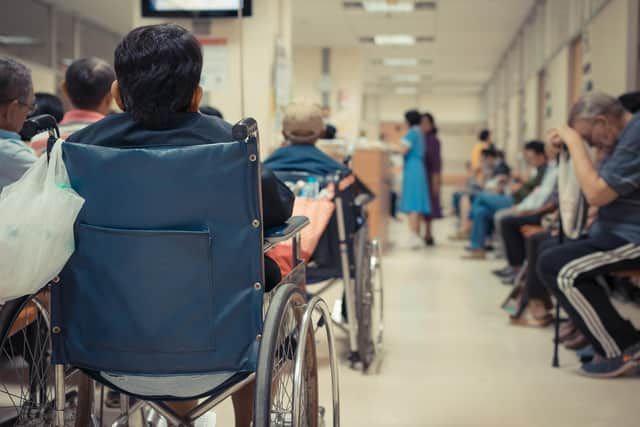Northamptonshire hospitals in top 25 per cent of dangerously busy hospitals in England, NHS data shows
and live on Freeview channel 276
Both Northampton and Kettering General Hospital are in the top 25 per cent dangerously busy hospitals across England, analysis of NHS figures shows.
A bed occupancy rate of 85 per cent is generally considered to be the safe limit - one that has been endorsed by the Royal College of Emergency Medicine (RCEM).
Advertisement
Hide AdAdvertisement
Hide AdHowever - out of 137 hospitals - 120 of them were found to be functioning at 85 per cent occupancy or above in the final week of 2022, while just 17 hospitals were functioning safely below the standard rate.


Ninety-four hospitals had an occupancy rate of above 92 per cent - both Northampton and Kettering General Hospital are included in that figure.
The figures, published as part of the NHS’ weekly winter Situation Reports, shows two hospitals were functioning at 100 per cent capacity.
The figures are a snapshot of occupancy levels taken at 8am each day. But health experts warn the figures could be even worse than the published data suggests due to the time of day when it is recorded.
Advertisement
Hide AdAdvertisement
Hide AdHow does Northampton and Kettering General Hospital compare to other hospitals?
In the seven days leading up to 1 January 2023, patients occupied 96.1 per cent of beds at Northampton General Hospital (NGH).
This means that, out of 137 England hospitals, NGH ranked 34th busiest hospital in the country for that period.
Meanwhile, Kettering General Hospital (KGH) had an even higher bed occupancy rate of 96.5 per cent - ranking it 28th in the list.
This places both Northamptonshire hospitals in the top 25 per cent of dangerously busy hospitals in England.
Advertisement
Hide AdAdvertisement
Hide AdHow does high bed occupancy affect NHS hospitals?
In the final week of 2022, 93.2 per cent of general and acute hospital beds were occupied on average each day across acute trusts. This left fewer than 7,000 beds available for new patients across the entire country.
Bed shortages lead to waiting time backlogs and delays in A&E. Evidence shows that it can lead to a rise in hospital acquired infections and other “avoidable adverse events”, according to a review by the National Institute for Clinical Excellence (NICE).
A Department of Health and Social Care spokesperson said: “We recognise the pressures the NHS is facing following the impact of the pandemic and are working tirelessly to ensure people get the care they need, backed by up to £14.1 billion additional funding for health and social care over the next two years.
“This includes investing an additional £500 million to speed up the safe discharge of patients from hospital, creating the equivalent of 7,000 more beds nationally and establishing 24/7 data driven system control centres in every local area to manage demand and capacity.”
“There are record numbers of nurses and doctors working in the NHS – with almost 4,700 more doctors and over 10,500 more nurses compared to October 2021.”
